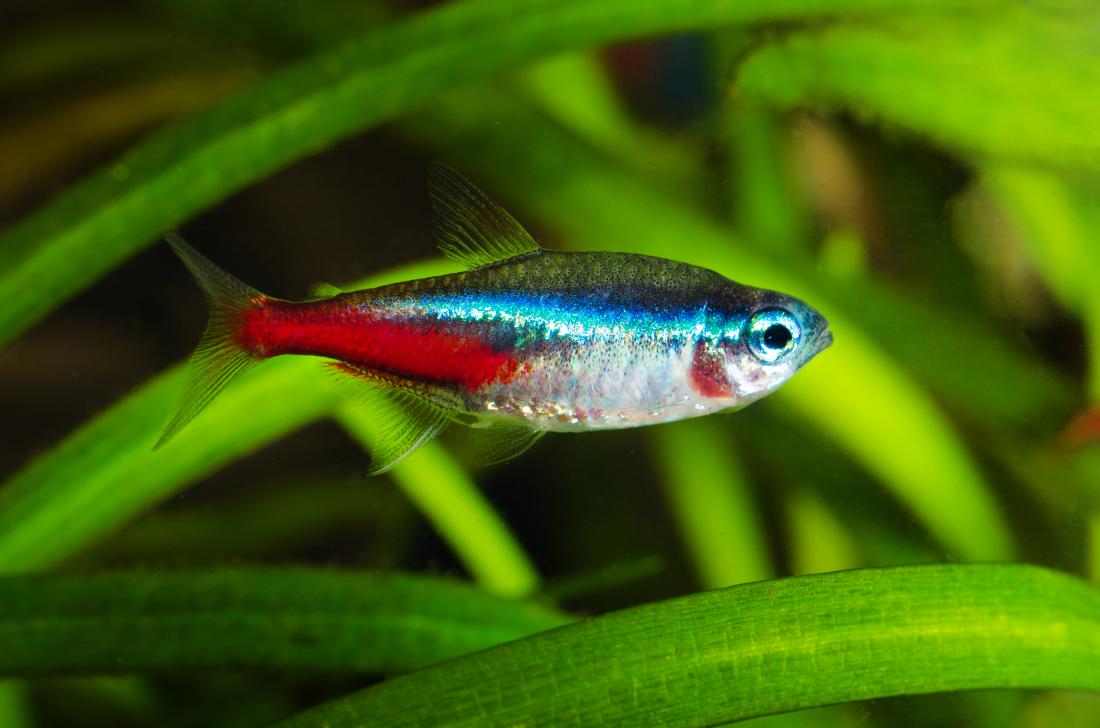
The tetra fish can regenerate heart tissue following heart damage.
The tetra fish is a type of freshwater fish hailing from regions of South America and southern North America. Many tetra species are popular with aquarium owners due to their unique coloring and the fact that they are fairly easy to keep.
A new study suggests that they are now also popular with researchers, although for an entirely different reason. Most species of tetra fish are able to heal their own hearts following heart damage.
Dr. Mathilda Mommersteeg, an associate professor at the University of Oxford in the United Kingdom, recently led a team of researchers who were striving to understand how tetra fish are able to regenerate heart tissue.
The team looked at two different subspecies of tetra fish, Astyanax mexicanus, that are native to Mexico. One of these subspecies lives in rivers, is beautifully colored, and can heal its own heart.
Fish belonging to the other subspecies, known as the “blind cave tetra,” populate the waters of the Pachón cave in Mexico. These fish have not only lost their color and their eyesight, neither of which serves them in the darkness of the cave, but they no longer have the ability to regenerate heart tissue.
In a recent study, Dr. Mommersteeg’s team has compared the genetic profiles of the two types of tetra fish in order to understand what genetic features may be responsible for the self-healing abilities.
The findings of the study, which the British Heart Foundation supported, appear in the journal Cell Reports.
The gene that drives heart repair
Dr. Mommersteeg’s team analyzed and compared the genetic profiles of both kinds of fish. In doing so, they identified three areas on their genomes that were relevant to the ability to regenerate damaged heart tissue.
In further analyzing these genetic areas, the researchers were also able to identify the genes that were the most important for heart regeneration.
When they compared the activity of these genes in the river tetra and the blind cave tetra following heart damage, the scientists saw that two genes, lrrc10 and caveolin, had increased activity only in the river tetra.
“A real challenge until now was comparing heart damage and repair in fish with what we see in humans. But, by looking at river fish and cave fish side by side, we’ve been able to pick apart the genes responsible for heart regeneration,” says Dr. Mommersteeg.
Previous research in mice has shown that lrrc10 is linked to a heart condition called dilated cardiomyopathy, in which the heart becomes excessively enlarged and is no longer able to pump blood properly. The results of further studies have suggested that lrrc10 plays a key role in heart cell contraction and expansion.
To confirm that this gene is also involved in the regeneration of damaged heart tissue, the researchers behind the current study turned to zebrafish, another freshwater species that is popular among aquarists. Like the tetra fish, zebrafish also have the ability to regenerate heart tissue if necessary.
New hopes for future treatments
In the second part of their study, the researchers blocked lrrc10 gene expression in zebrafish. These animals became unable to effectively repair heart damage. This, the researchers say, indicates that lrrc10 is indeed responsible for heart regeneration.
“It’s early days, but we’re incredibly excited about these remarkable fish and the potential to change the lives of people with damaged hearts,” Dr. Mommersteeg remarks.
In the future, the research team hopes to learn more about the mechanisms behind the ability to heal damaged heart tissue. They want to use this knowledge to repair heart tissue in people facing problems with this organ, such as heart failure.
Heart failure often occurs due to a heart attack, during which the heart muscle becomes damaged and progressively loses cells, which scar tissue replaces. This process can render the heart unable to function correctly, and, as a result, many people with severe heart failure require a heart transplant.
However, if tetra fish can teach us how to heal the heart, transplants may become less of a necessity in the future.
“These remarkable findings show how much there is still to learn from the rich tapestry of the natural world,” says Prof. Metin Avkiran, an associate medical director at the British Heart Foundation.
“It’s particularly interesting that the ability of the river fish to regenerate its heart may arise from an ability to suppress scar formation. We now need to determine if we can exploit similar mechanisms to repair damaged human hearts.”
Prof. Metin Avkiran
“Survival rates for heart failure have barely changed over the last 20 years, and life expectancy is worse than for many cancers. Breakthroughs are desperately needed to ease the devastation caused by this dreadful condition,” he adds.
